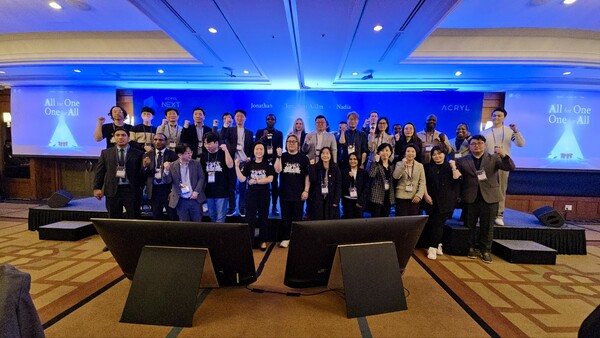"Two trainees burned out before the AI was ready—not from coding, but from listening."
Speaking at Acryl NEXT 2025, the annual conference hosted by Acryl, an AI company, on Monday in Seoul, psychiatrist Kim Dai-jin described what it took to build Korea’s first government-cleared AI diagnostic for depression. His team at Seoul St. Mary’s Smart Hospital had spent years labeling transcripts—700 of them, drawn from real doctor-patient interviews—to train the model.
“People cried. People lied. People said things they couldn’t say twice,” Kim said, adding that two medical fellows “couldn’t take it” and dropped out before the work was done.
The product, now known as ACRYL-D01, received regulatory approval from the Ministry of Food and Drug Safety (MFDS) in December last year. It doesn’t talk, prompt, or simulate empathy, but ingests a transcript and delivers a single output: the probability that a patient is clinically depressed.

Kim said the goal was never to mimic therapy but to identify what general practitioners often miss—subtle emotional shifts, signals buried in hesitation or phrasing, and details overlooked in a 10-minute consultation.
Unlike typical AI training datasets, which are often clean, structured, and built from curated samples, these transcripts were, in Kim’s words, “a mess.” Acryl’s team tagged each line by emotional tone—anger, fear, sadness, surprise—and cross-referenced the labels against psychiatric evaluations. The idea, he said, was to teach the system not just what was said, but how it was said.
Earlier this month, the company received a second green light from MFDS for Esther Prostex 1, an AI model that diagnoses two subtypes of benign prostatic hyperplasia (BPH) without requiring invasive urodynamic testing. Instead of using pressure sensors or catheters, it combines patient questionnaires, flow rate data, and transrectal ultrasound in a single model that, according to Acryl, delivers over 85 percent diagnostic accuracy. “Men don’t want tubes in their bodies,” Kim said, “but they’ll answer a form and pee in a flowmeter.”
Both systems reflect the company’s core design principle: start with what the clinic already has—interviews, intake forms, noninvasive tests—and let the algorithm do the sorting.
Acryl’s deputy CEO, Shin Hyun-kyung, said she joined the company after spending three decades in hospital operations, where she saw patient data collected but rarely used. “The billing systems worked,” she noted at Monday’s conference, “but the care systems didn’t.” She had once believed that opening more hospitals might fix the gaps, but each new one, she said, “broke the same way—costs up, staff down, patients waiting longer.”
At Acryl, she led the development of “Jonathan,” a platform designed to clean, standardize and move hospital data through every stage of AI development, from training to deployment—without disrupting clinical workflows. On top of that came "NADIA," a modular interface that connects AI tools directly into provider systems without overhauling workflows.
Acryl announced at the conference that it has successfully passed the technical evaluation for the Kosdaq technology-based special listing and has officially entered the process for its initial public offering (IPO). Together with its lead underwriter, Shinhan Investment Corp., Acryl is preparing for an IPO targeting the second half of this year.
Related articles
- Ybrain's device improves depression symptoms in perinatal women: data
- Psychiatrists warn against stigmatizing mental illness after teacher's crime sparks misconceptions
- Electronic questionnaire system enhances pediatric headache diagnosis, study finds
- Chronic dizziness tied to stress and depression, study finds, urging rethink in treatment
- Silent struggle: 68% of mothers experience postpartum depression, but few seek medical help
- MSD and CellBion launch Korea’s 1st radioligand-immunotherapy trial for prostate cancer
- Korean radiologists question whether AI diagnostics are ready for clinical reality
- Ybrain selected for government-funded project to develop wearable robots for paralysis rehabilitation

